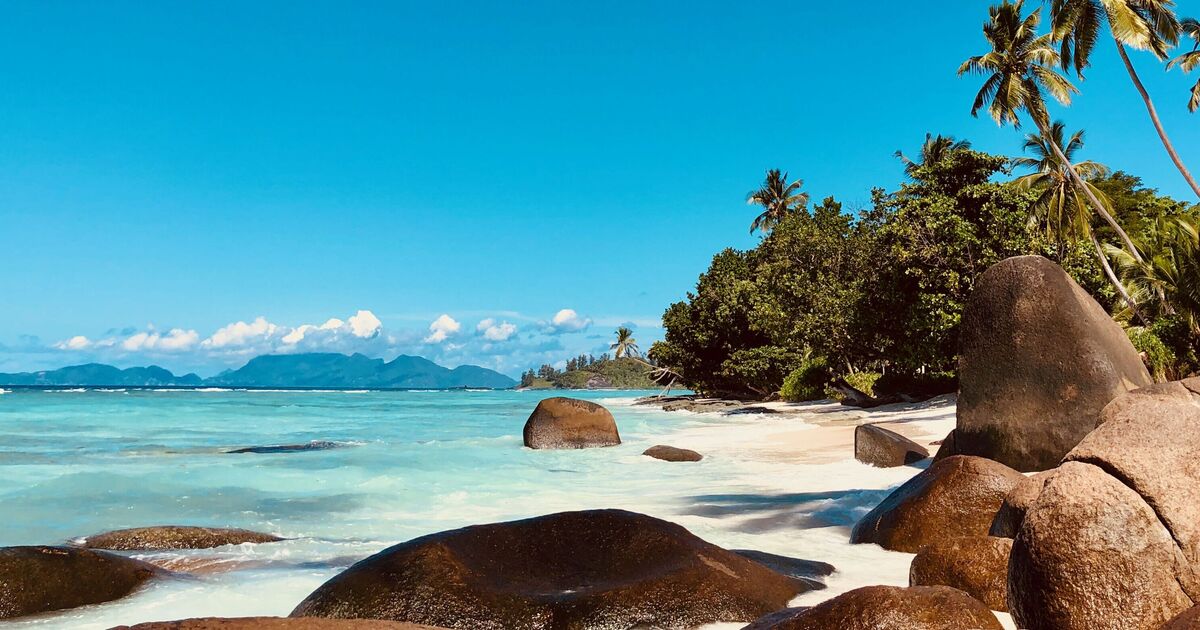October and November are the perfect months to pack your bags and visit the beautiful island country of the Seychelles in the Indian Ocean, with temperatures still at their best but a drop in strong winds.
The archipelagic state is often named among the top holiday destinations, thanks to its abundance of beautiful white sand beaches, crystal clear waters, wildlife, nature and vibrant blend of cultures.
Seychelles is the smallest country in Africa, with an area of 176 square miles. Its capital and largest city, Victoria on Mahe, sits 800 nautical miles east of the mainland. As of 2022, it has an estimated population of just 100,600.
As of the early 21st century, Seychelles has the highest nominal per capita GDP of any African nation. Since proclaiming independence from the UK in 1976, it has developed from a largely agricultural society to a diverse economy characterised by tourism, among other industries.
The majority of its 155 named islands (according to its Constitution) are uninhabited, with many dedicated as nature reserves.
They fall into two categories: 41 inner granitic islands that form the backbone of the country’s tourism offerings, with their wide suite of services and amenities, most of which are readily accessible through a selection of day trips and excursions as well as the more remote coral islands where at least an overnight stay is essential.
The climate is very humid, with it classified as a tropical rainforest. Temperatures vary little throughout the year, with the average lows in the coolest months – July and August – remaining at a pleasant 24C.
In November, Seychelles had a rather humid atmosphere but perfectly pleasant temperatures ranging between 24 and 30C. On certain days at the end of the month, the mercury can even reach 38C.
Seychelles is among the world’s leading countries in protecting lands for threatened species, allocating 42 percent of its territory for conservation. Like many fragile island ecosystems, there was a loss of biodiversity when humans first settled in the area, including the disappearance of most of the giant tortoises and the extinction of species such as the Seychelles parakeet and the saltwater crocodile.
Seychelles is home to some of the most idyllic beaches in the world, fringed by palms with soft white sand and turquoise waters. Praslin is one of the must-see islands, with Anse Lazio being a particular highlight. Here, the water is so clear one can see shoals of fish without needing a snorkel mask. This half-mile-long crescent on the northern tip bags the “best sunset viewpoint”.
Anse Source D’Argent is one of the world’s most photographed beaches also thanks its striking granite formations. To reach it you’ll have to walk or cycle through the grounds of L’Union Estate plantation, which carries an over £8 entrance fee.
In 1971, with the opening of Seychelles International Airport, tourism became the primary industry of the island nation.
Direct flights from the UK to the Seychelles are rare and take around 10 hours, while layovers usually take at least 12. According to Booking.com, flights to SEZ in November start at around £642, from several London airports including Heathrow, Gatwick and Stansted.
The islands offer a variety of accommodation options, including luxury resorts, family-friendly resorts and more affordable options. For example, Constance Ephelia in Mahe offers one-to-three bedroom villas, some with private pools set in tropical gardens or near the beach. King rooms are available for £374 per night, while a double costs £250 per night.
There are also Airbnbs available on various islands, with some available for as little as £70 a night.










